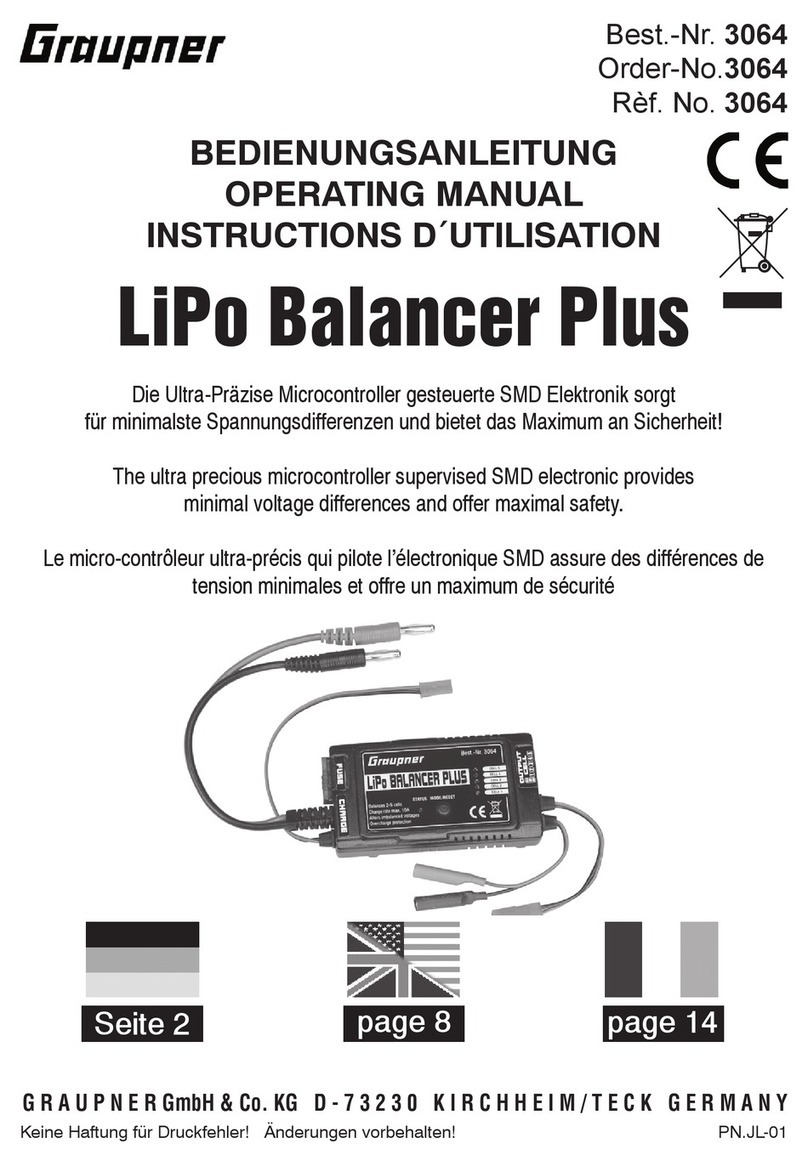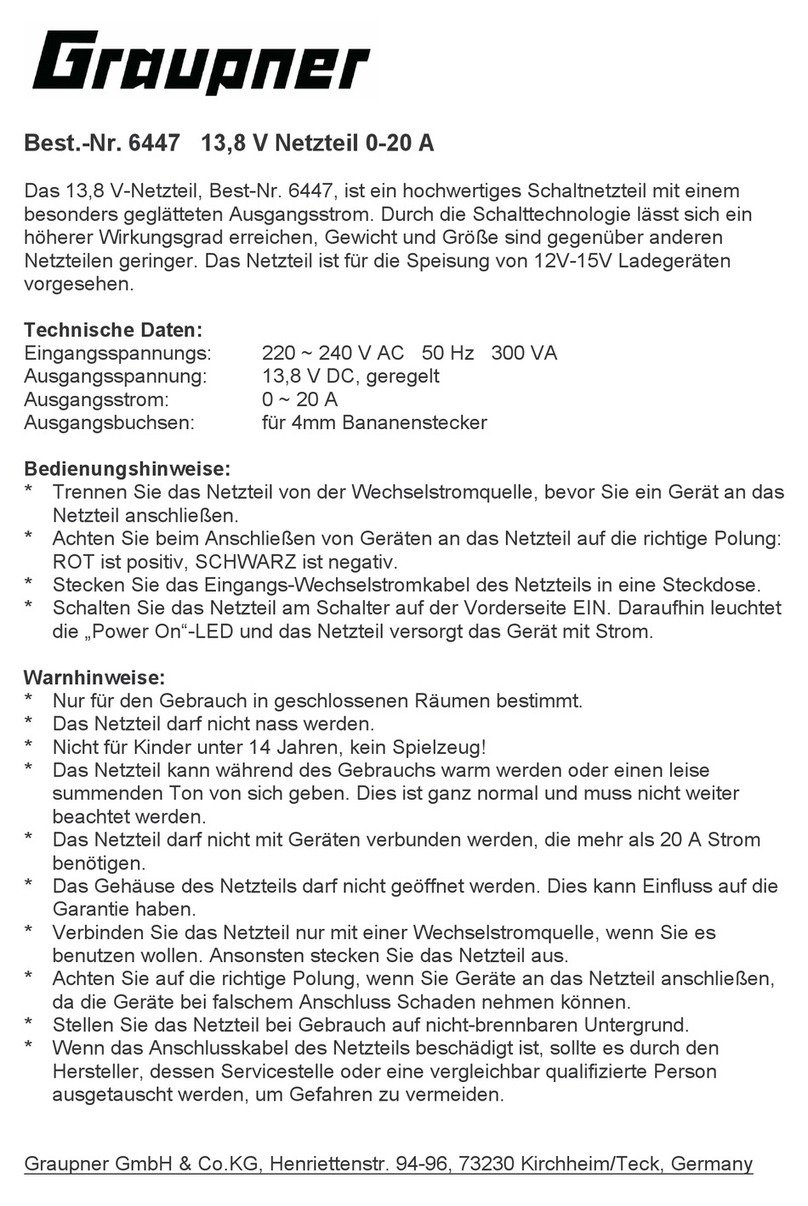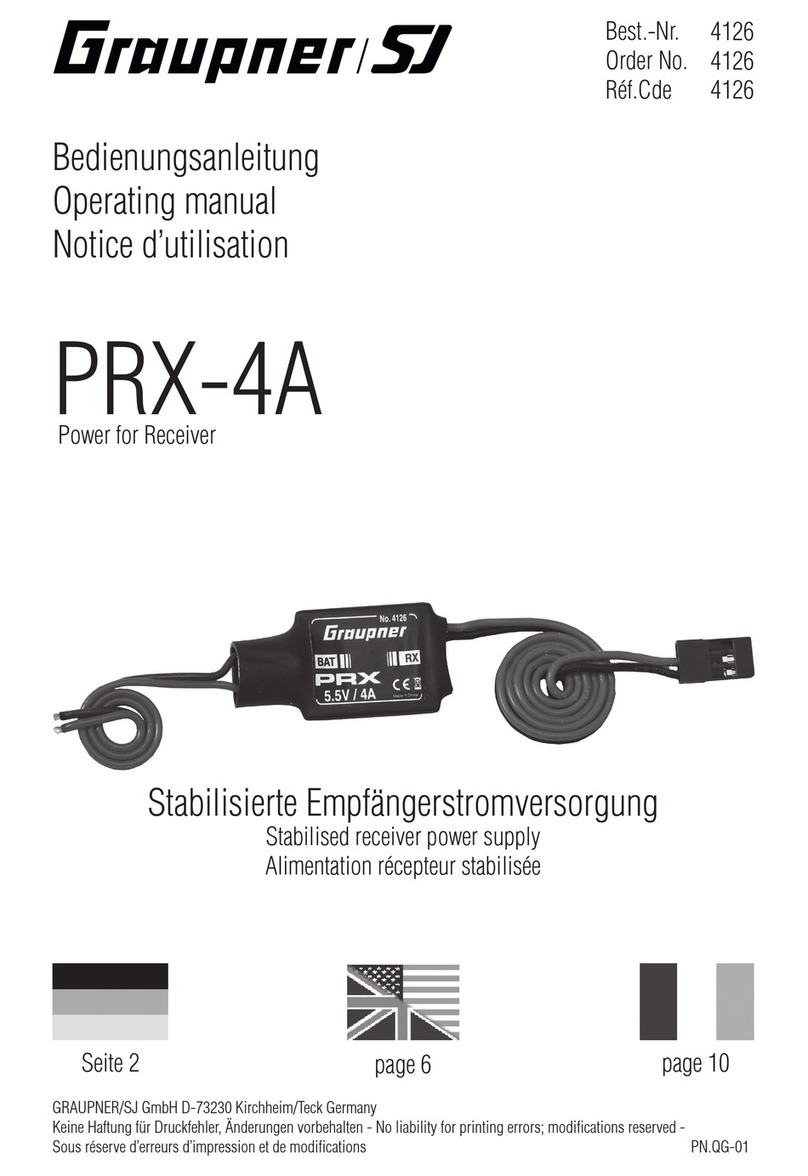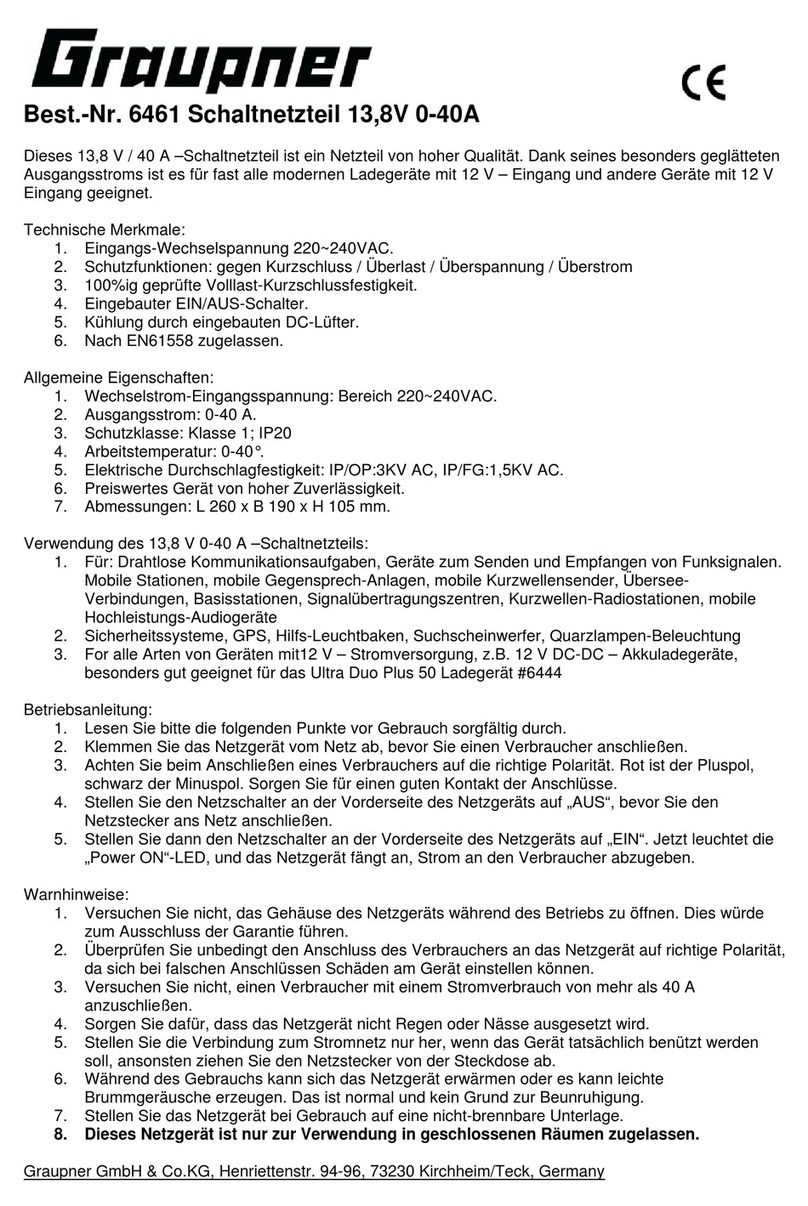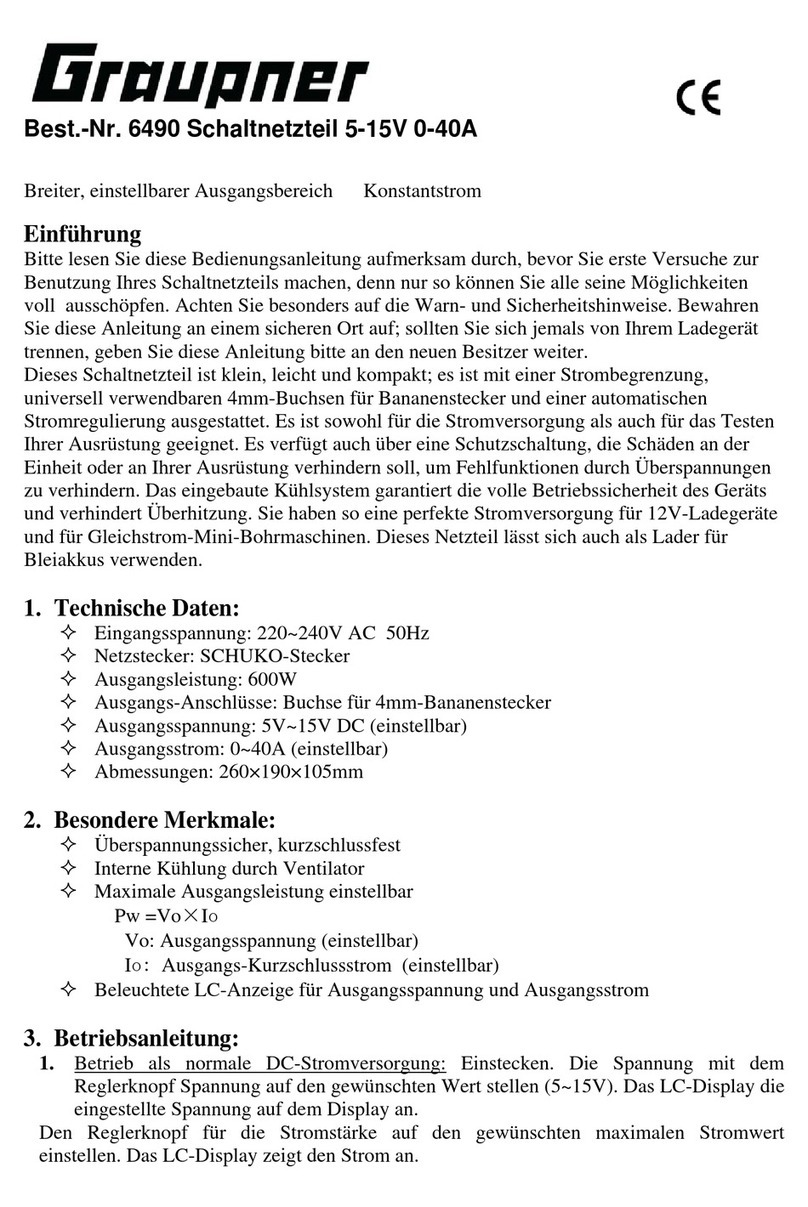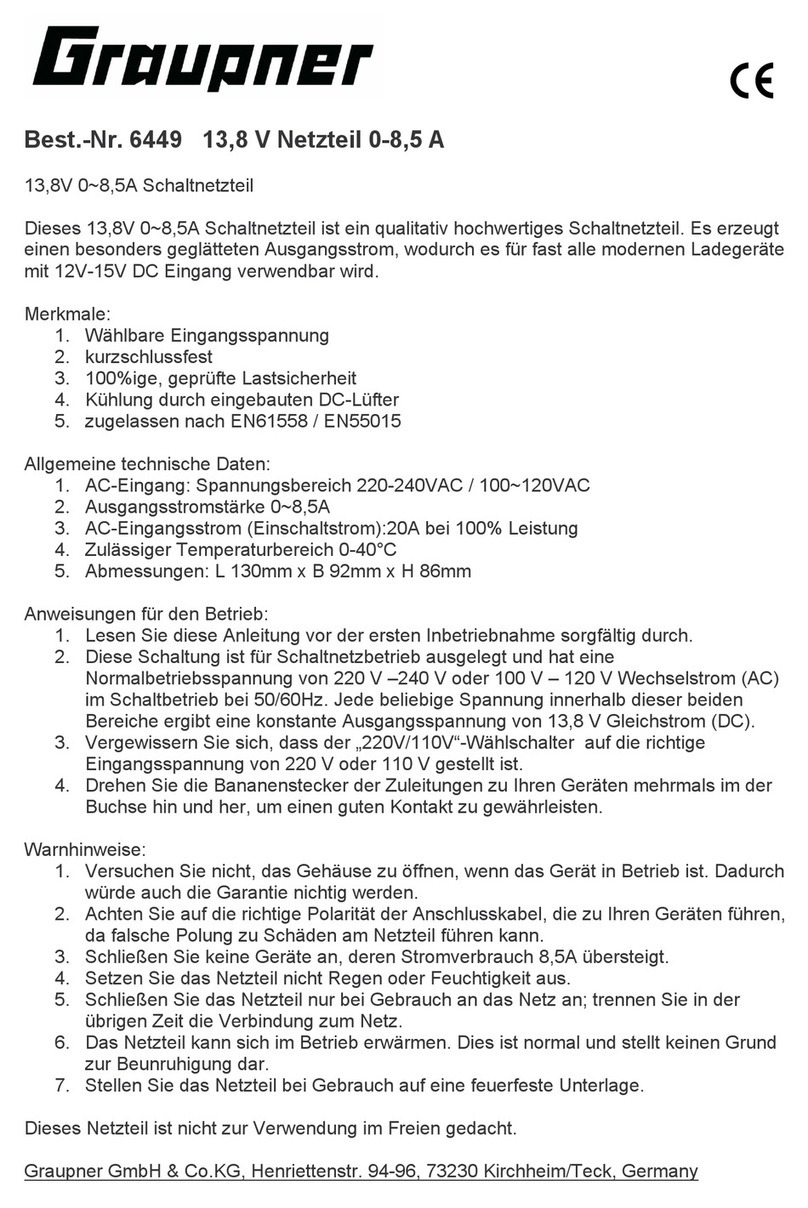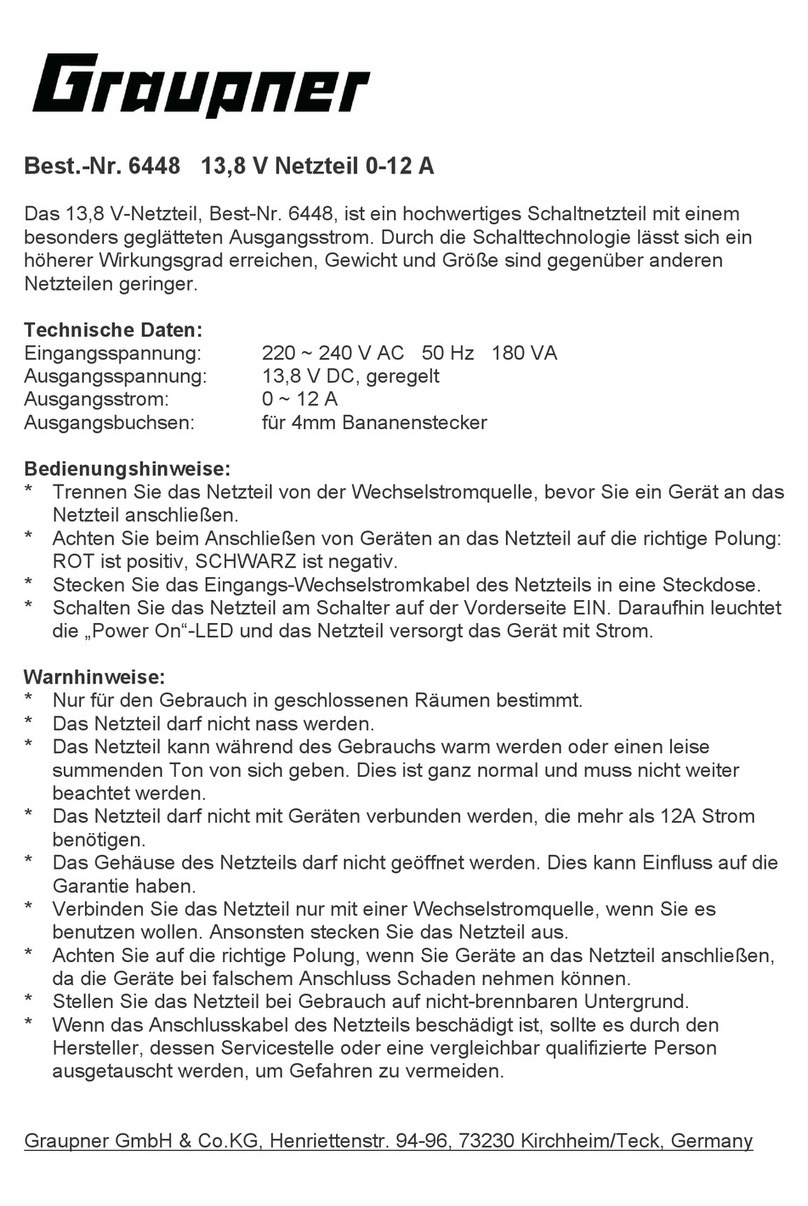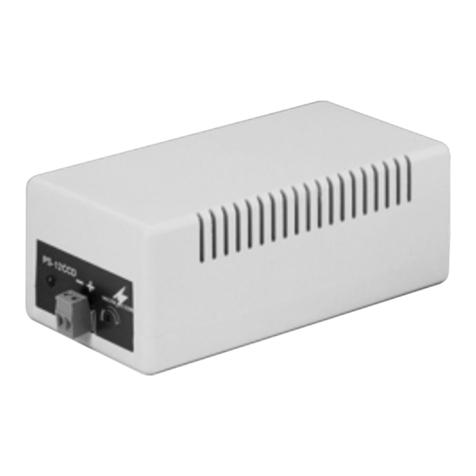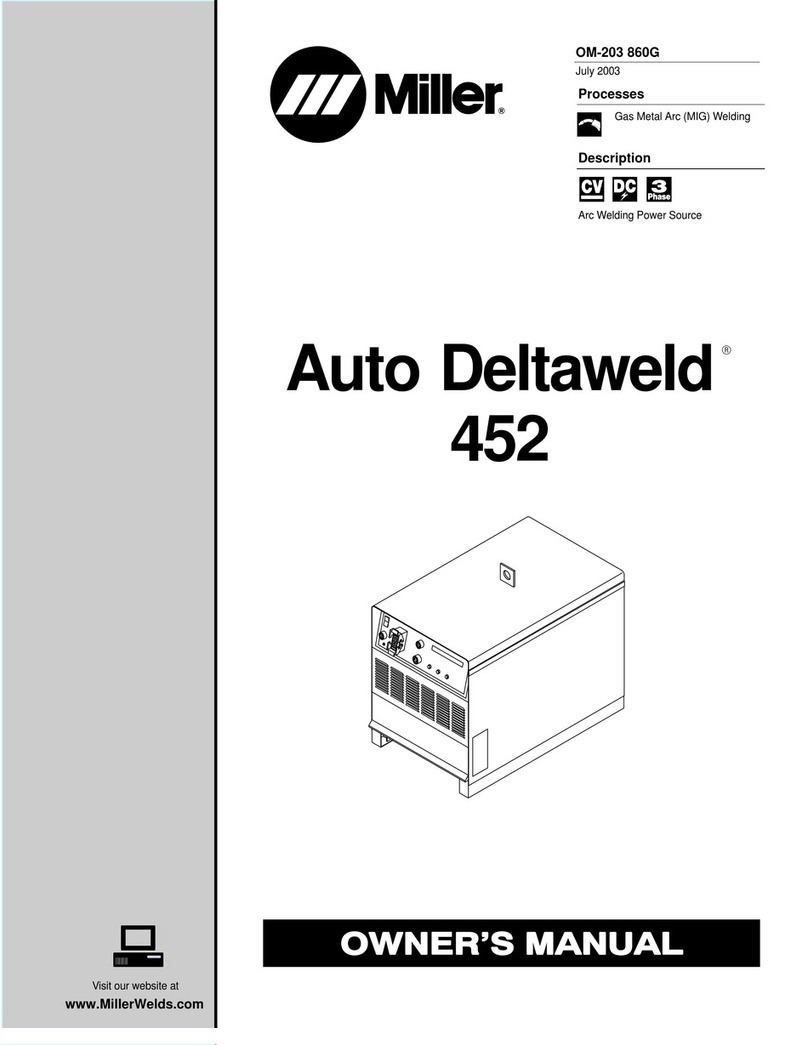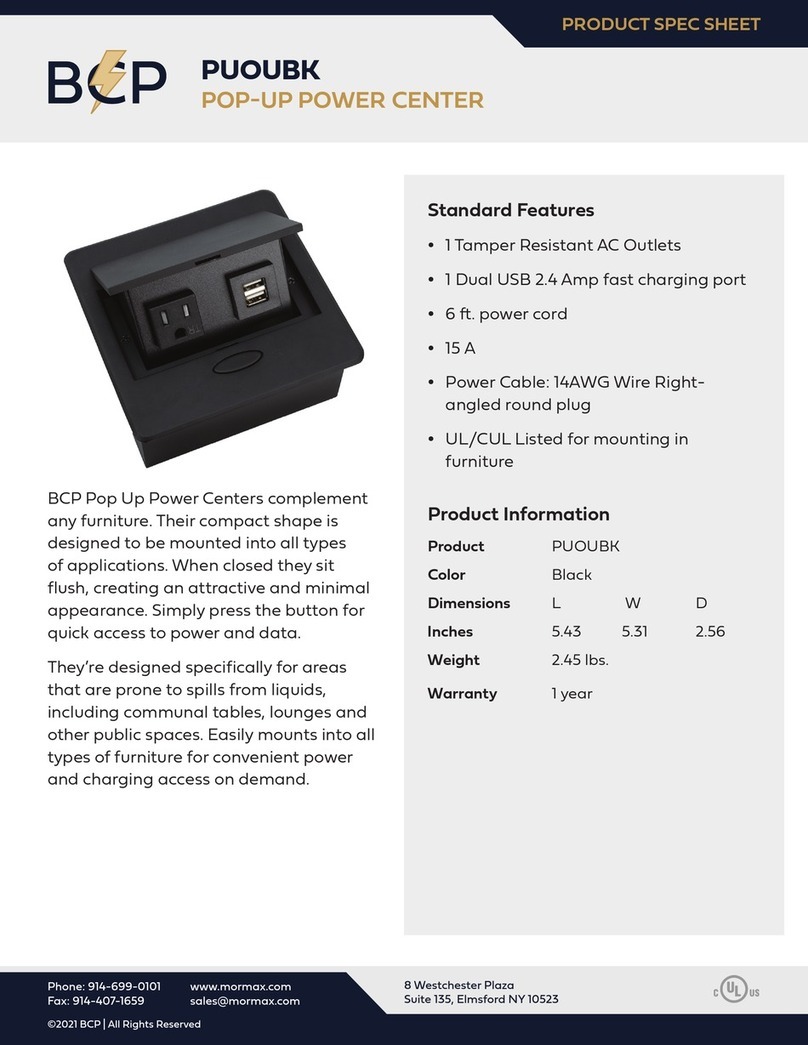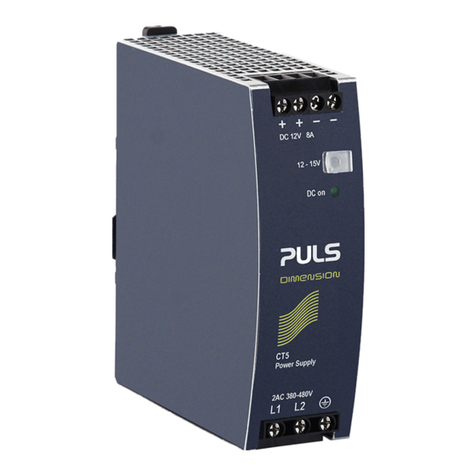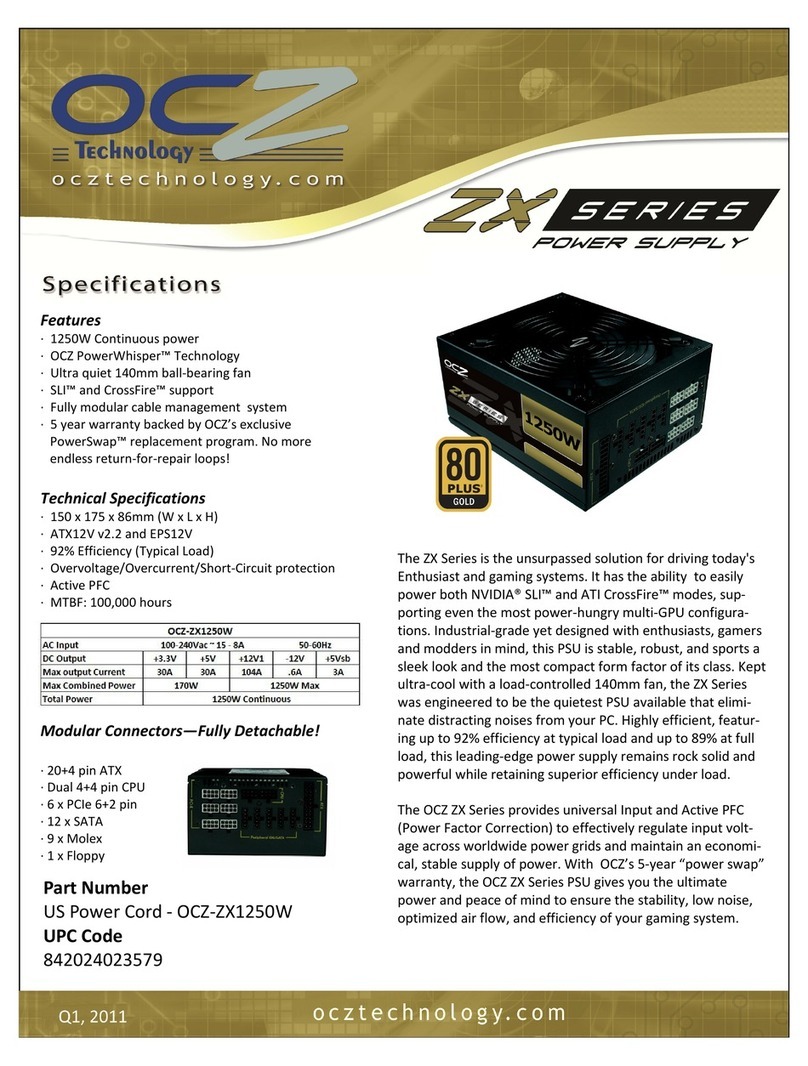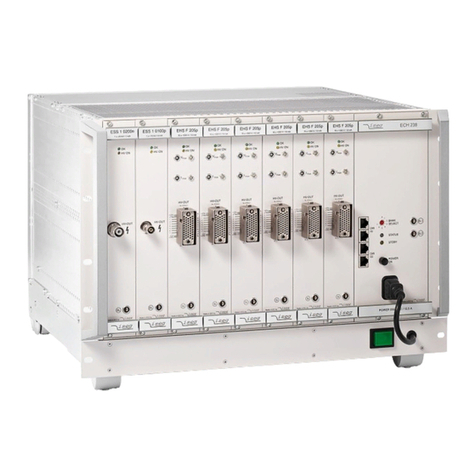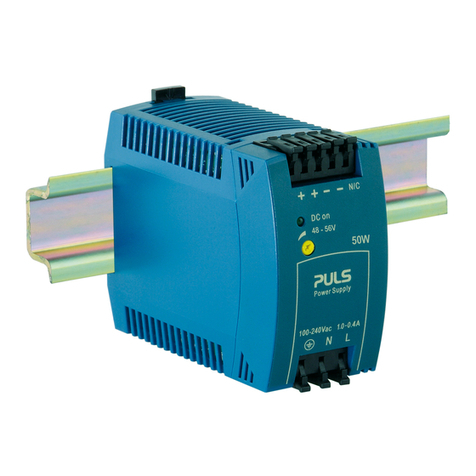
Herzlichen Glückwunsch zum Kauf der stabilisierten Empfängerstromversorgung PRX von
Graupner. Eine erfolgreiche Anwendung setzt die Einhaltung bestimmter Grundsätze voraus.
Lesen Sie bitte vor der Inbetriebnahme diese Bedienungsanleitung aufmerksam durch.
- Das CE-Zertifikat dieses Gerätes entbindet nicht der Verpflichtung, äußerste Vorsicht zu
- Verwenden Sie nur zur PRX passende Akkus von Graupner oder GM-Racing. Achten Sie
hierbei auf die richtige Zellenzahl des Akkus und dessen Ausgangsspannung.
- Wählen Sie an der PRX eine Ausgangsspannung, die für den angeschlossenen
Empfänger und Servos geeignet ist (informieren Sie sich beim Hersteller der Komponenten).
- Wählen Sie an der PRX vor dem Einschalten den richtigen Akkutyp aus, um die dazu
passenden Betriebszustände des Gerätes angezeigt zu bekommen.
- Akkus zum Laden immer von der PRX abstecken und am besten aus dem Modell nehmen.
- Lassen Sie Ihr RC-Modell niemals unbeaufsichtigt, solange ein Akku angesteckt ist. Im Falle
eines Defektes, könnte dies Feuer am Modell oder seiner Umgebung verursachen.
- Die PRX oder andere elektronische Komponenten dürfen niemals mit Wasser in Berührung
kommen. Die PRX ist vor Staub, Schmutz, Feuchtigkeit, Vibration, extreme Kälte oder
Hitze und anderen Fremdteilen zu schützen.
- Alle Kabel und Verbindungen sollen gut isoliert sein. Kurzschlüsse können zur Zerstörung
der PRX führen. Anschlüssen nicht verpolen!
- Nicht für Kinder unter 14 Jahren, kein Spielzeug!
- Die PRX ist ausschließlich für den Einsatz in Akkubetriebenen, funkferngesteuerten Modellen
vorgesehen, ein anderweitiger Betrieb ist nicht zulässig. Der Gebrauch in einem Modell zur
Personenbeförderung ist verboten!
- Motoren, Getriebe, Schiffs- oder Luftschrauben sind gefährliche Gegenstände. Halten Sie
sich daher niemals neben oder vor dem Gefährdungsbereich des Antriebes auf!
- Führen Sie immer zuerst einen Reichweitetest und Funktionstest am Boden durch (halten
Sie dabei Ihr Modell fest), bevor Ihr Modell zum Einsatz kommt. Wiederholen Sie den Test
bei laufendem Motor und mit kurzen Gasstößen.
- Es dürfen keinerlei Veränderungen an der PRX durchgeführt werden.
Sowohl die Einhaltung der Montage- und Bedienungsanleitung, als auch
die Bedingungen und Methoden bei Installation, Betrieb, Verwendung und Wartung der
PRX können von der Fa. Graupner nicht überwacht werden. Daher übernimmt die
Fa. Graupner keinerlei Haftung für Verluste, Schäden oder Kosten, die sich aus
fehlerhafter Verwendung und Betrieb ergeben, oder in irgendeiner Weise damit
Es dürfen nur von uns empfohlene Komponenten und Zubehörteile verwendet werden.
Verwenden Sie nur zueinander passende, Original GRAUPNER - Steckverbindungen und
